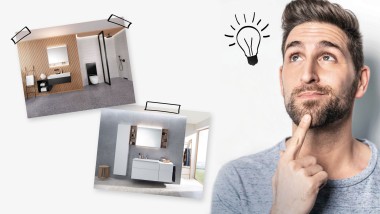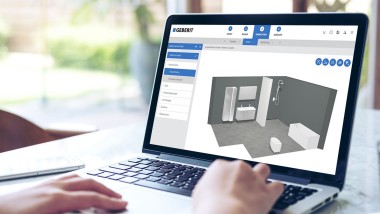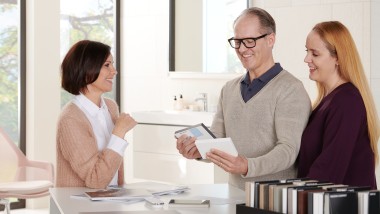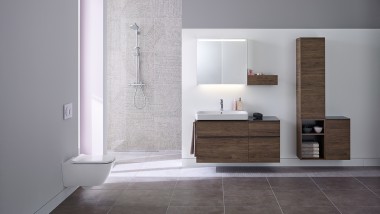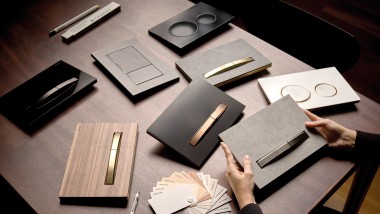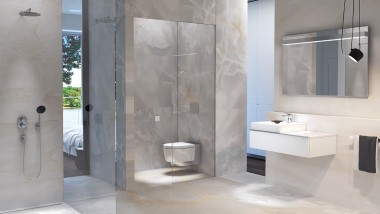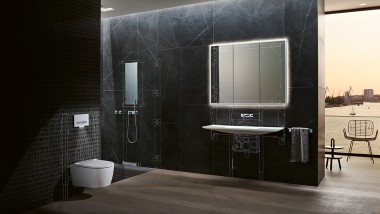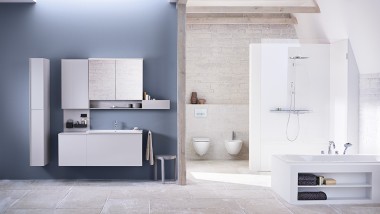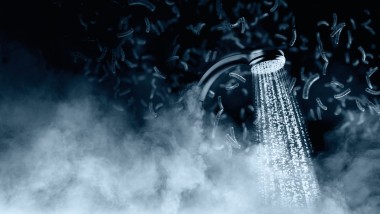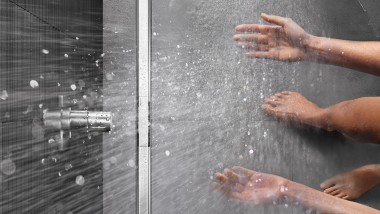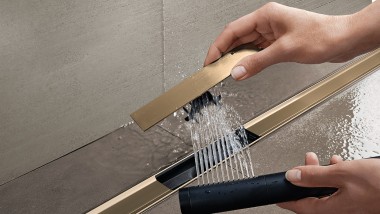Ways to save water in the bathroom Reducing consumption when flushing and showering
Water is a precious resource that is scarce in many regions. Handling water carefully – particularly drinking water – is therefore of great importance.
Data on water usage in the bathroom
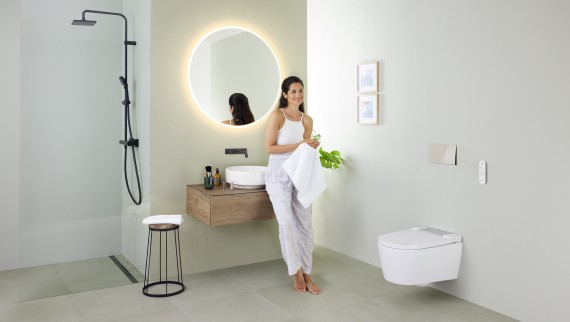
A person in Switzerland consumes 140 litres of drinking water a day in their own household, a person in Germany 127 litres. That's around 50,000 litres per person per year!
Around two-thirds of the water consumed in a European household on average every day happens in the bathroom. One-third is taken up by personal hygiene, including baths and showers. A further third is used by the toilet flush.
However, water can be saved in exactly these areas with a minimum of effort.
Seven tips for saving water in the bathroom
Tip 1: Take a shower instead of a bath
Although a bath is nice and relaxing, it uses significantly more water than a shower. While a shower uses between 40 and 60 litres on average, a bath can quickly use 150 to 200 litres. A full bathtub even contains as much as 250 litres.
In addition to saving water, showers also save energy as the water has to be heated up. A bath filled with hot water requires more than one litre of heating oil.
Tip 2: Take shorter showers
But watch out, saving water and energy is only realistic when showers are kept short. Each minute, around 10 to 12 litres of water run off down the drain on average. Showering for more than ten minutes can quickly use over 100 litres of water. Taking a short shower is thus recommended.
Tip 3: Install a water-saving shower head
A water-saving shower head can reduce the flow rate of water in the shower significantly. In contrast to a conventional shower head, the water-saving version has a water flow rate of 6-9 litres per minute, depending on the model. Many models are equipped with a stop button or different intensities. The flow of water can also be reduced using special tap enhancement solutions. The result is effective water saving in the bathroom!
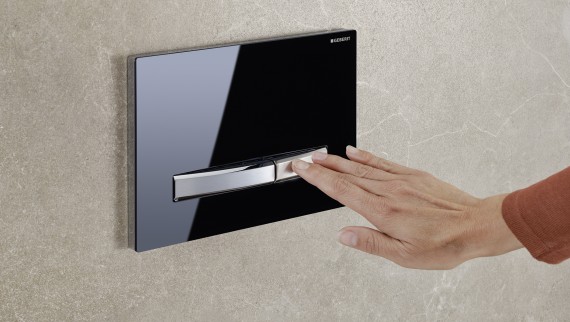
Tip 4: Use dual-flush actuator plates or a flush-stop pushbutton when flushing the toilet
6 to 9 litres of drinking water end up in the toilet on average with each flush. Modern toilet flushes are real water savers. By using Geberit dual-flush actuator plates, you can reduce the small flush to below 3 litres. The full flush volume can be set to 4 litres. This is thanks to the Geberit flush valve in the cistern.
Ask your plumber about the optimal setting for your toilet. The flush-stop pushbutton is an alternative to dual-flush actuator plates and is used to manually interrupt the flushing process.
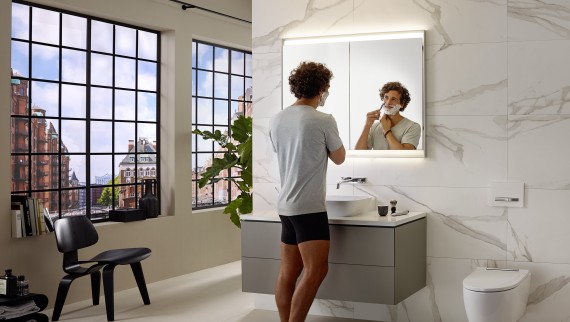
Tip 5: Don’t let the water run
Brushing your teeth, washing your hands or shaving all take time. While you usually need water at the beginning and end, there is no sense in letting the water run in between. This then flows directly down the drain without being used.
Turning the tap off temporarily can save a considerable amount of water!
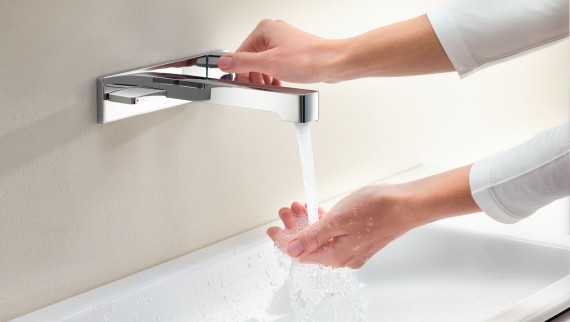
Tip 6: Use cold water instead of hot water
Preparing hot water uses additional energy. Furthermore, it always takes a while for the hot water to make its way from the boiler to the tap. In the meantime, unused cold water flows out of the tap.
Washing your hands quickly with hot water results in disproportionately high water consumption.
Tip 7: Repair any dripping taps
A constantly dripping tap doesn’t just get on your nerves, it also puts a strain on your water bill – and thus the environment. A dirty or worn seal is usually the reason for a dripping tap. This seal can be cleaned or replaced with a minimum of fuss.
FAQs on water usage when showering and more
How high is the average water usage when showering?
When showering, the water usage depends on the length of your shower and the installed shower head. On average, showering uses 10 to 12 litres of water per minute. Anyone showering for longer than ten minutes then uses about as much water as when taking a bath.
What should you watch out for when buying taps?
How can hygienic coatings on bathroom ceramics save water?
Newsletter Register now
Stay up to date
Our newsletter provides fascinating insights and handy tips on how your bathroom can make your life easier.
Added value to you Get inspiration for your new bathroom
Inspiration tool
Discover ideas and functions in the modern bathroom and choose what you like and what is important to you. In just a few steps, you can bring together the elements of your dream bathroom.
Contact us
If you have any questions, simply fill out the contact form.
3D bathroom planner
Plan your bathroom online using the 3D view and choose between various options. You can also request a quote to turn your dream into a reality.
Newsletter
Our newsletter will provide you with insights and tips on how your bathroom can simplify your day-to-day life.
Always staying up to date
Subscribe to our newsletter and don’t miss out on any news, events or tips for the bathroom. Stay up to date with the latest products, important dates for your calendar and more information on cleanliness, optimisation of space, comfort, design, user-friendliness and accessibility in the bathroom.
Which bathroom is the right one for you?
But, what exactly are your needs? Is space, cleanliness or the design important to you? Would you like user-friendly products or would you prefer that extra degree of comfort that the Geberit AquaClean shower toilet, for example, has to offer? Or would you prefer a universal design? No matter what your needs are, we simplify your daily routine with our clever bathroom solutions.
More space in the bathroom
Higher standard of cleanliness in the bathroom
More functional design in the bathroom
Greater comfort in the bathroom
Increased accessibility in the bathroom
Improved usability in the bathroom
